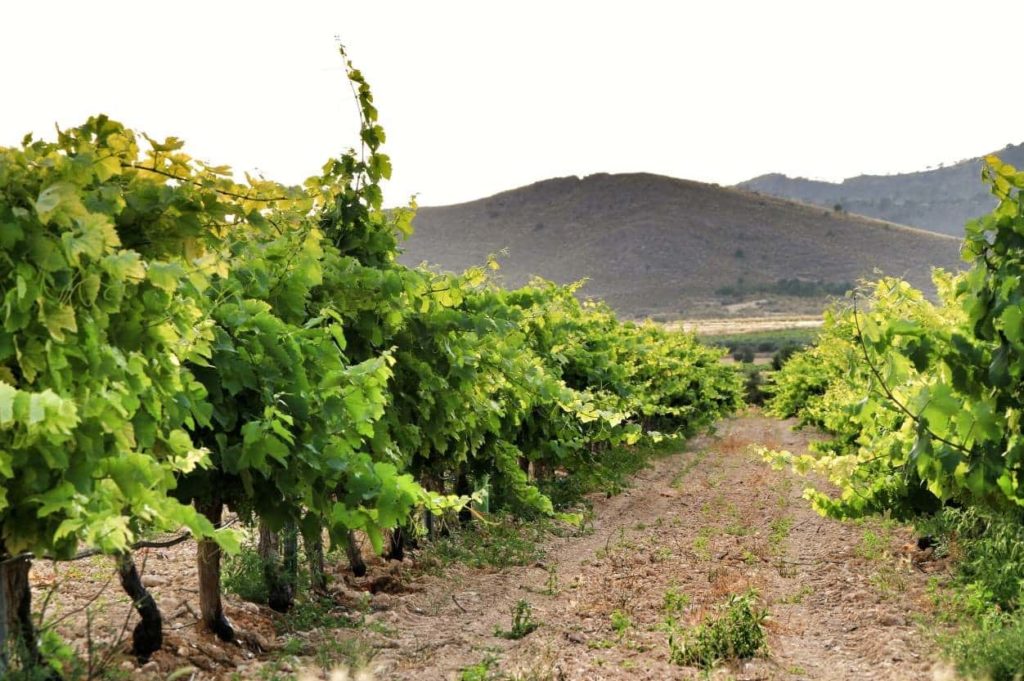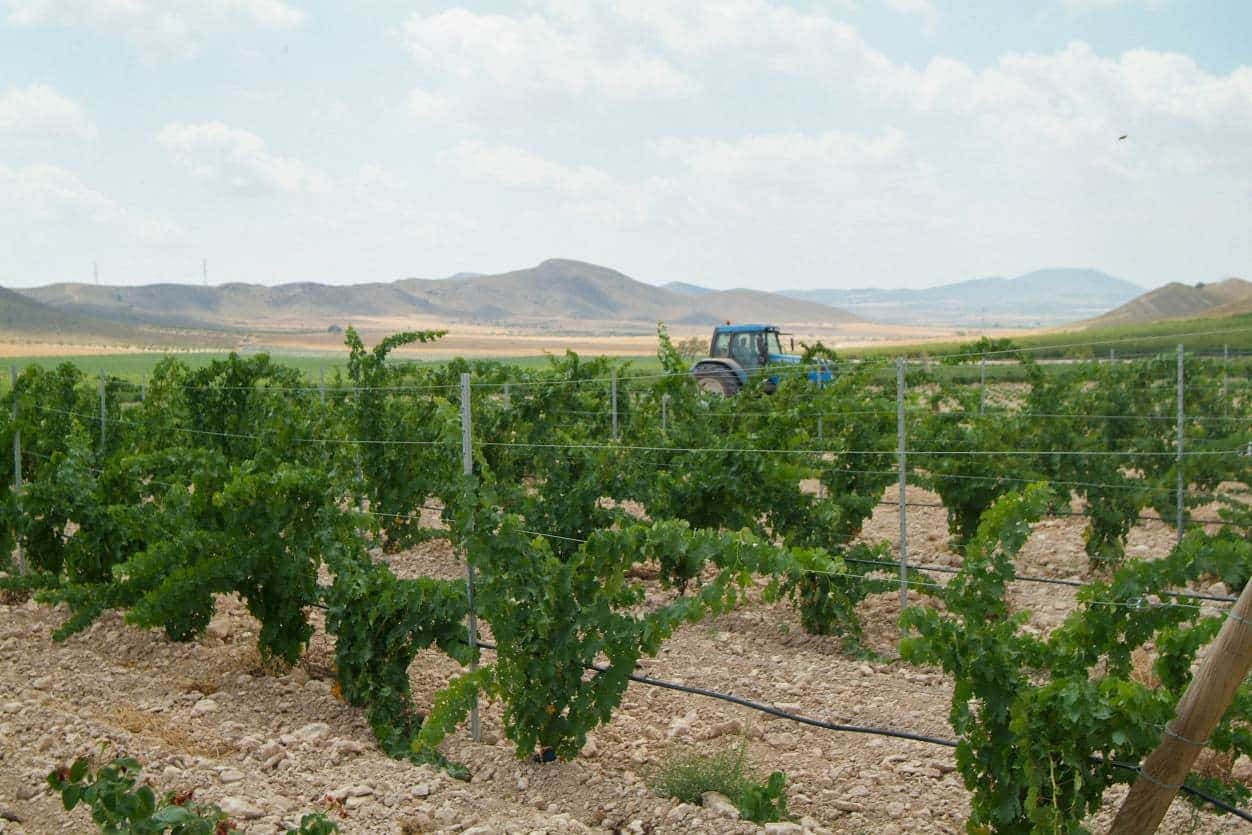
An insight into Spanish wine regions: Jumilla

In southeastern Spain, you will find the Jumilla wine region. Travel almost two hours southwest from Valencia and you’ll soon arrive in the heartland of Jumilla’s wine industry. To the north is the appellation of Yecla, and to the south is Bullas. Awarded DO (appellation) status in 1966, Jumilla DO now has approximately 32,000 hectares planted for different grape varieties. However, 80% of the land is dedicated to Monastrell (Mourvedre), the noble red grape of Bandol in Provence.
The Jumilla region of southeastern Spain has been occupied for more than 50,000 years. Before the Moors arrived, the Greeks, Phoenicians and Romans all cultivated vines in these arid plains and transformed the landscape (via revolutionary irrigation channels) into a vivid canvas of market gardens and citrus groves. In the 19th century, the Phylloxera louse decimated European vineyards, and Jumilla was one of few regions to escape its grasp. Today the region is one of very few to have un-grafted vines from before Phylloxera hit.
Jumilla was exploited to produce large quantities of alcoholic and unrefined wine. Yet the region has re-evaluated its viticultural priorities. The demand for premium wine transformed the Spanish wine industry; growers in Jumilla are no exception. An influx of new money and winemaking talent has also been utilized to create stylish wines that are delightfully concentrated yet fresh. Much excitement has coalesced around the potential of the local Monastrell grape.
Click on a link to jump to that section:
Geography and terroir
The regional capital was founded in 852 AD by the Moors following the successful irrigation of the surrounding fertile meseta (plains/plateau). It has evolved into one of Spain’s smallest autonomous regions and one of the nation’s driest areas.
Over 3,000 growers operate in the zone, flanked by chains of mountains, including Santa Ana, that stand between the coast and the plateau of southeastern Spain. The scenery incorporates picturesque valleys and harsh plains. The intense summer heat means only robust varieties can survive in the wine region.
Viticulture thrives here, despite the immense challenges of growing vines in Jumilla. Irrigation is often vital in this continental climate, with average rainfall hovering around 300mm. Meanwhile, temperatures can exceed 40°C in the midday sun in July and August. Fortunately, there are some ameliorating factors to soften the harsh climate of Murcia. Jumilla is blessed with calcareous terroir: these lime-rich soils are porous, which allows the vines to access vital water reserves during the growing season. Elevation also plays an important role; higher altitude sites (specific vineyards that rise to 800 metres above sea level) benefit from cooler conditions and all the advantages of diurnal temperature variation.

Key grape varieties
Red grape varieties
- Monastrell (Mourvèdre) is a very robust variety that can tolerate prolonged periods of heat and drought. Yet it is also minded to produce a sprawling vine canopy – judicious pruning and monitoring are essential throughout the growing season. Nevertheless, it can yield magnificent red wine: voluptuous, intensely aromatic, and profound.
- Syrah – The noble red grape of the Rhone Valley can also shine in Jumilla, producing deeply coloured and robust reds that offer a distinct scent of red fruit and plum.
- Cabernet Sauvignon – ripening Cabernet Sauvignon in the arid plains of Jumilla can be all too easy – maintaining freshness is the challenge. The best wines merge force and finesse with powerful mocha, ripe fruit and blackberry aromas.
- Petit Verdot – aromatic and spicy, Petit Verdot is a late-ripening variety that can shine in southeastern Spain’s hot climate. Petit Verdot offers notes of red fruit, plum, cherry and violet and is often blended with Merlot and Cabernet Sauvignon to add perfume.
- Merlot – Although the Bordelais frequently blend Merlot with Cabernet Sauvignon and/or Cabernet Franc, it can produce delicious single-varietal wine in Jumilla. Soft tannins and voluptuous fruit are its local trademarks.
- Garnacha Tintorera (Grenache Noir) – the hot climate of eastern Spain yields very spicy and potent Grenache red wines, brimming with alcohol and verve. It blends very well with Syrah and Mourvèdre.
- Tempranillo – Homegrown Tempranillo bares little resemblance to the red wines of La Rioja; Jumilla’s terroir brings out the power and the exotic flavours of stewed plum and garrigue.
White varieties
A small percentage of white wine is produced in Jumilla. They include Airen, Chardonnay, Malvasia, Macabeo (Viura), Merseguera, and Pedro Ximenez.
Wine styles of Jumilla
According to the DO regulations, any wine labelled Monastrell must contain at least 80% of the named variety. After that, the winemaker is free to indulge their preferences. Merlot, Cabernet Sauvignon, Grenache, and Syrah all have a role to play in enhancing the structure and character of Jumilla-grown Monastrell. The best cuvées are usually aged in wood for at least 12 months, imbibing the wine with flavours of vanilla, cedar wood, and coffee. However, maturation in amphorae, concrete eggs and tinajas (small clay jars) is gaining popularity across Spain.

Although wines of all three colours (including some exceptional rosé) are made in the DO, Jumilla’s greatest gift to the world is undoubtedly its spicy and voluptuous reds. Spanish Mourvèdre, once overlooked by consumers and critics alike, has made a glorious comeback in the region. Bordeaux wine magnate Bernard Magrez chose to invest in the zone; Magrez is notoriously selective about his viticultural projects. The challenge of unlocking the potential hidden inside Jumilla’s ungrafted, pre-phylloxera bush wines was irresistible. These low-yielding plants deliver a tiny crop of immensely concentrated berries to make utterly beguiling red wine. The Monastrell variety is arguably one of Spain’s best red wine grapes, producing powerful, grippy and all-encompassing wines. As a result, winegrowers can occasionally veer into overripeness. However, the best Jumilla Monastrell combines intense concentration with a mineral-scented elegance.
Enjoying Jumilla wine
Exciting developments are taking place in the Jumilla wine region. These elegant and powerful wines from Monastrell or the pungent Airen white wines are best enjoyed with the flavours of Eastern Spain. Try paella seasoned with saffron or oxtail casserole. An accompaniment not to miss is pastel de carne – a Murcian dish of Middle Eastern origin consisting of minced meat and chopped boiled eggs in puff pastry. The best wine pairing is almost always a local one.
What to read next
An insight into Spanish wine regions: Priorat
An insight into Spanish wine regions: Ribeiro




